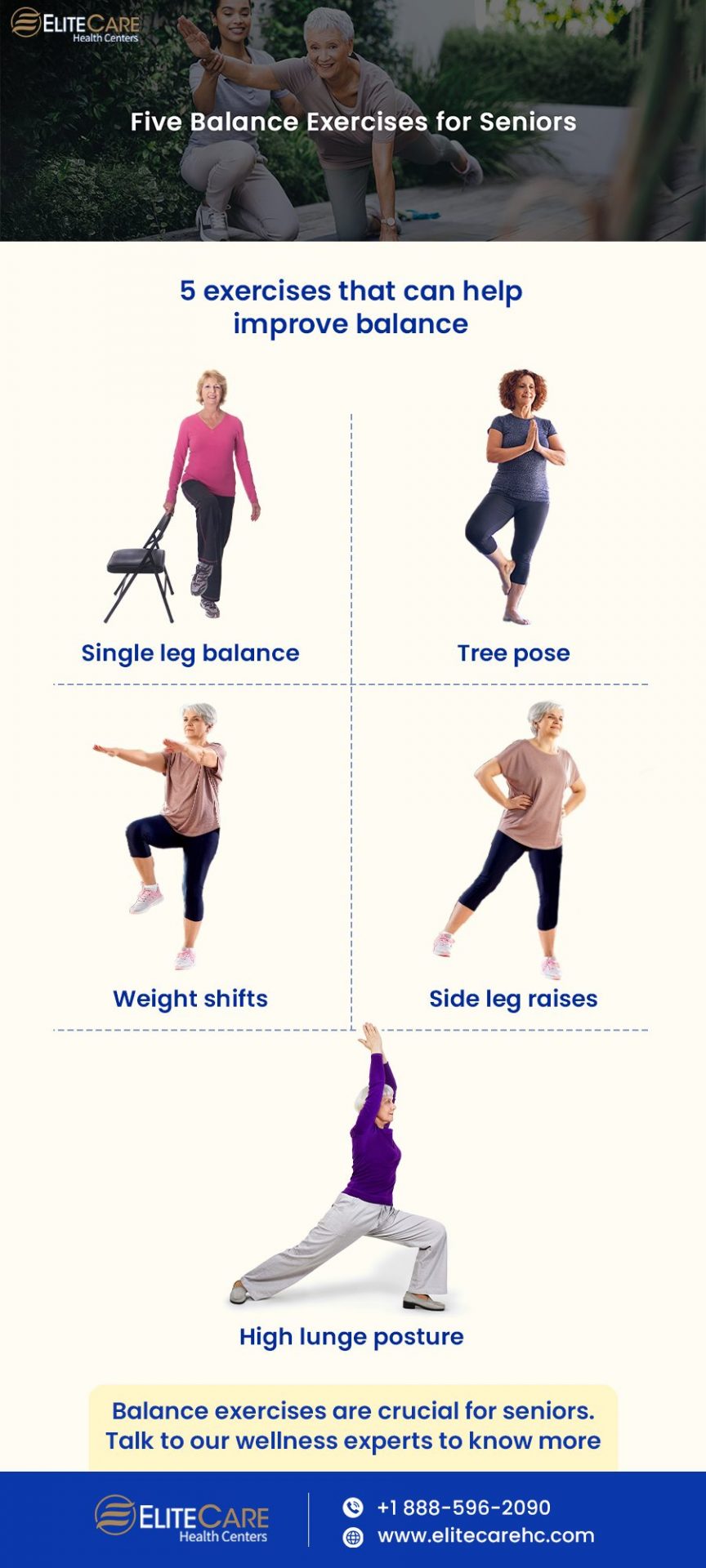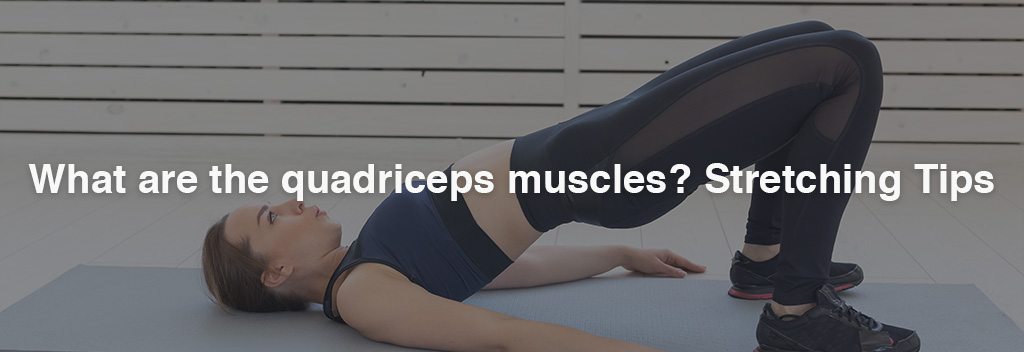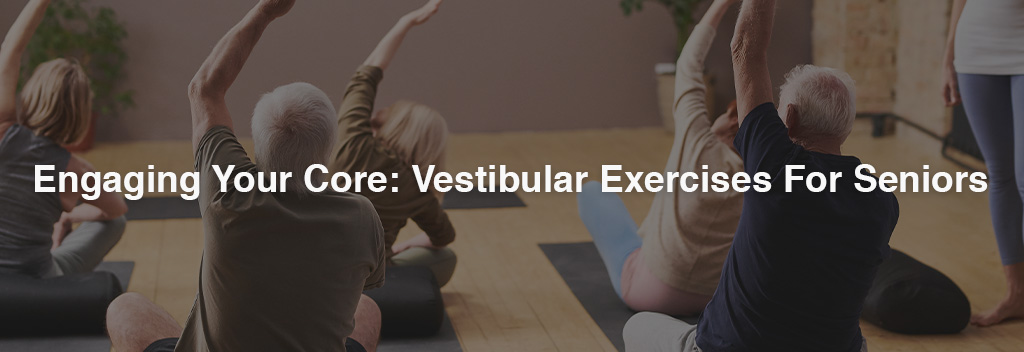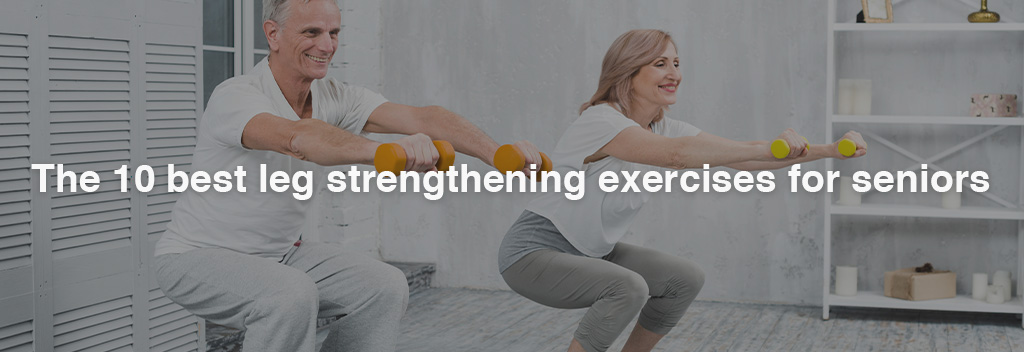
Reducing the risk of falls is a necessary precaution for seniors. More than 36 million falls are reported among the entire US population in a year.
Seniors who lose their balance while walking or have a feeling of imbalance are more likely to fall and get injured. Simple balance exercises for seniors like side leg lifts and wall pushups can increase stability and reduce the danger of falls and injury.
Why Do Seniors Struggle to Keep Their Balance?
Aging and balance – or lack of it – are closely associated with each other. People start losing physical strength, bone density, and their sense of balance as they age. Research indicates that the decrease in muscle mass begins around the age of 30.
Another effect of aging is a decrease in the quality of information offered by visual, auditory, and neural systems. The vision deteriorates, with increased glare sensitivity and impaired depth perception causing seniors to misread the terrain or underestimate distance, resulting in a fall.
Elderly people also take longer to recover from falls.
Certain drugs – antibiotics and diuretics, provided to the elderly population may cause blurred vision, low blood pressure-related dizziness or lightheadedness, drowsiness, delirium, and poor awareness. These drugs may have an effect on the inner ear, causing temporary or long-term balance problems and can increase the risk of falling.
Suggestions for improving balance
There are numerous exercises that can help improve the ability to keep one’s balance. However, one needs to start with light workouts appropriate for the senior’s specific health needs. Here are a few suggestions and exercises to improve balance.
- Consider using a yoga block or other exercise equipment to support knees and legs while performing balance exercises.
- Prioritize balancing the weaker side before focusing on the powerful side. Make sure the senior is working out both sides of their body.
- Try bending the knees, maintaining a straight posture, and allowing some breathing space between movements.
- Remember to use both legs for balancing exercises when performing deeper stretches or squats.
- To balance better, use chairs, a wall, or a counter space. Seniors can ask for the assistance of an “accountability buddy” to help supervise or support their balance workouts.
- Workout under the supervision of a trainer.
These 5 simple exercises help make a great start when it comes to improving one’s balance. They are easy to add them into a daily routine while increasing overall levels of physical activity and fitness.
5 Exercises That Can Help Improve Balance
1. Single Leg Balance
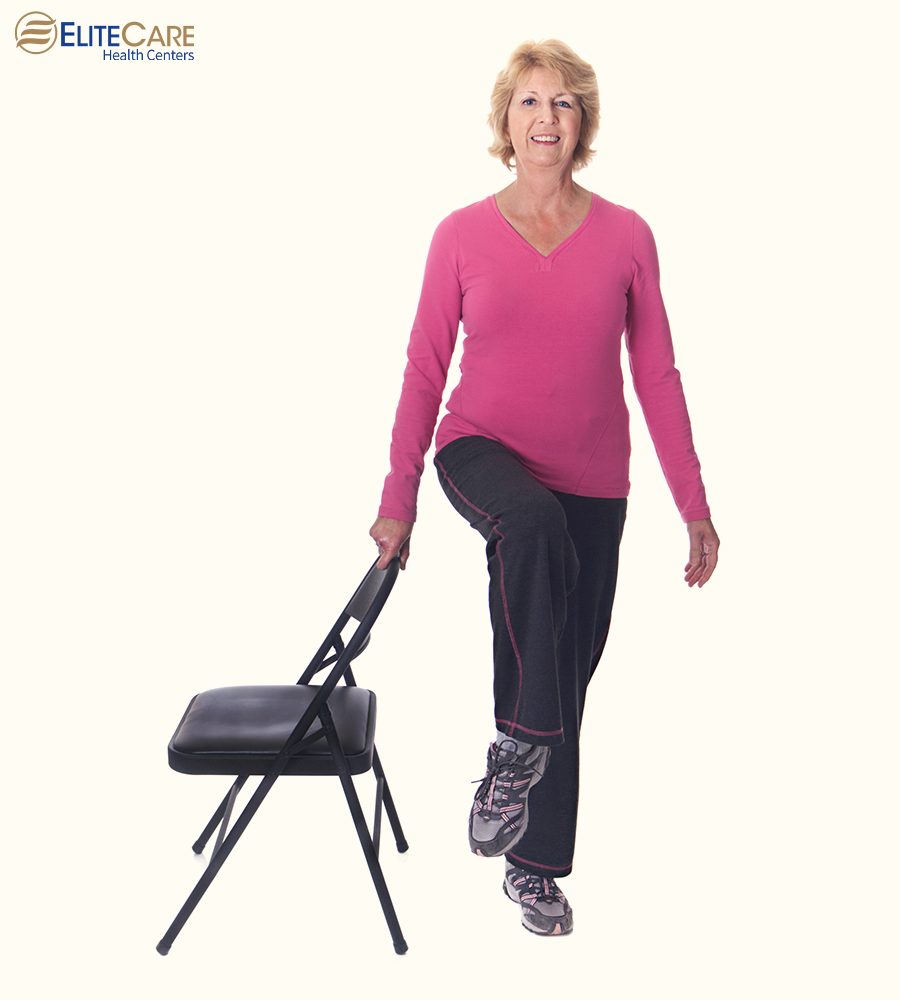
- Ask the senior to stand hip-width apart near a table or railing. Grasping something will help them maintain their balance or easily place their foot back down if they lose their balance.
- Ask them to lift their right leg first, lifting their right foot off the ground. Make sure they are holding onto the table or railing as necessary.
- See if the senior can maintain this posture for ten to thirty seconds with their right leg and right foot in the air.
- Once the procedure is complete, seniors can lower their legs while holding onto the railing or table. Repeat the procedure on the left foot and leg.
Do each side 2 to 3 times. Through regular practice, seniors can restore significant amounts of strength and balance in their body.
2. Tree Pose
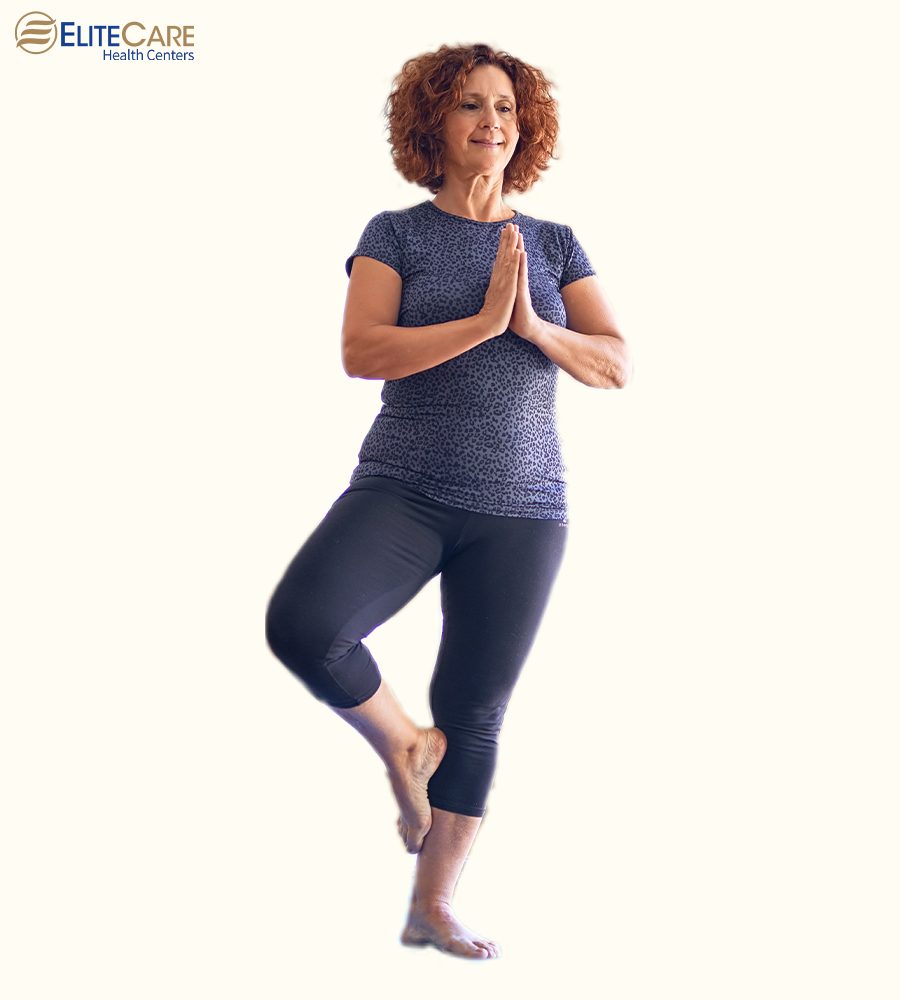
- As seniors perform this exercise, ask them to keep their foot on their knee.
- Put weight on the right foot and stand.
- Place your left foot’s sole against the ankle, thigh, or shin while angling your left foot to the side.
- Palms need to be joined together
- Hold for as long as easily possible – and up to a minute.
- Repeat with the other side.
Do three to five reps per side. Tree pose strengthens the core, legs, and ankles and enhances posture.
3. Weight Shifts
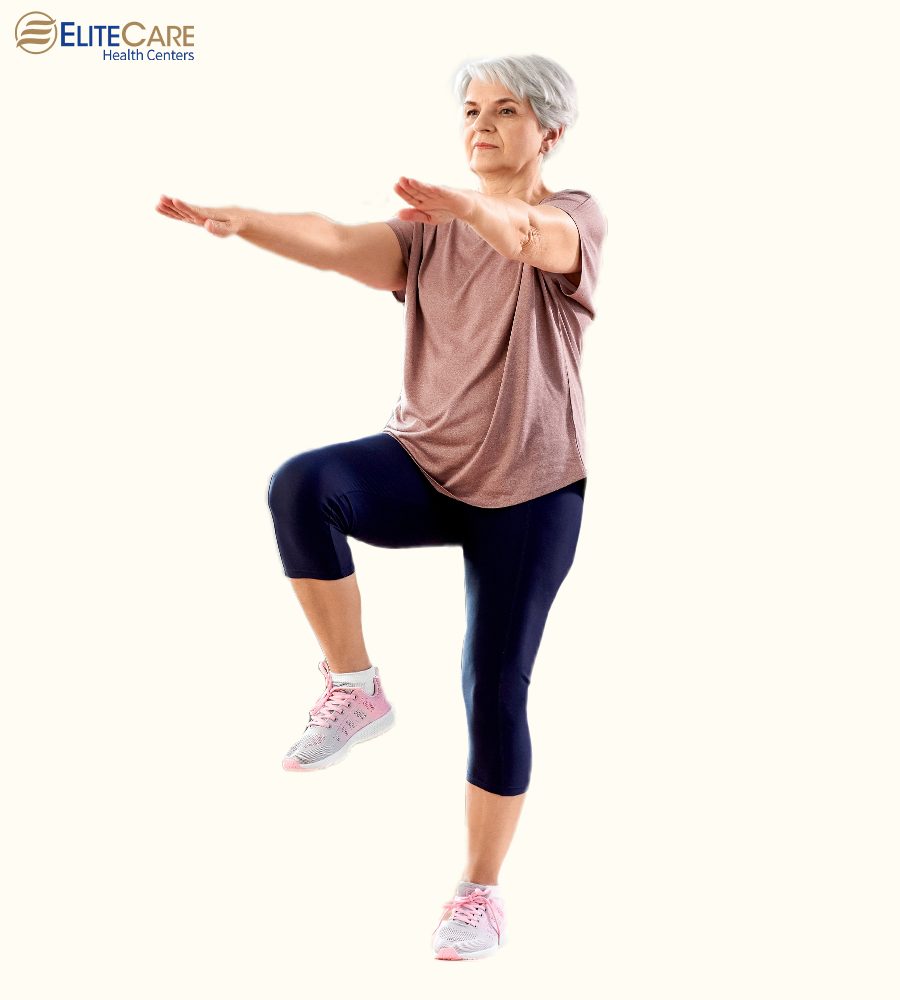
- Stand upright and space the legs hip-distance apart
- Extend the hands out in front and use a chair for support.
- Kneel, shift your weight to the right side
- Hold the position for a few seconds
- Then, do the opposite side
- Hold this position for a few seconds
Weight shifts are mild exercises that seniors can perform without moving their legs. They are excellent for increasing flexibility and alleviating joint stress.
4. Side leg raises
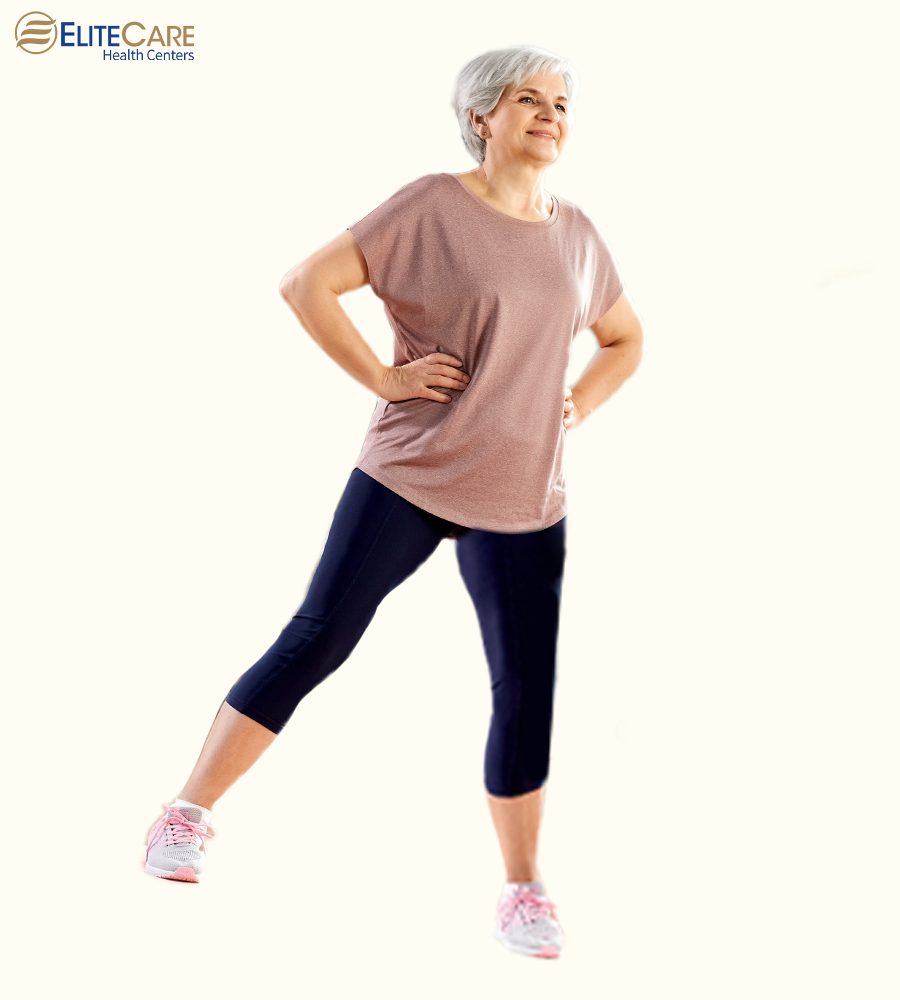
Hold onto something, like a table edge, or a railing for support.
- Start with the left leg. Before raising the left foot off the ground, it is required to grip a support railing, a table, handle or someone’s arm.
- When ready, raise the left foot off the ground to balance on one leg.
- Extend their left leg as far as l comfortably possible – in a single-leg balance posture. Hold for 10 to 30 seconds.
- Another option is to try bringing their right leg to their side as opposed to their left. In this instance, the right leg will cross the left leg. Hold for another 10 to 30 seconds
- Step-by-step, repeat with the other leg.
Side leg raises help to improve hip mobility and build strength around the knees.
5. High Lunge Posture
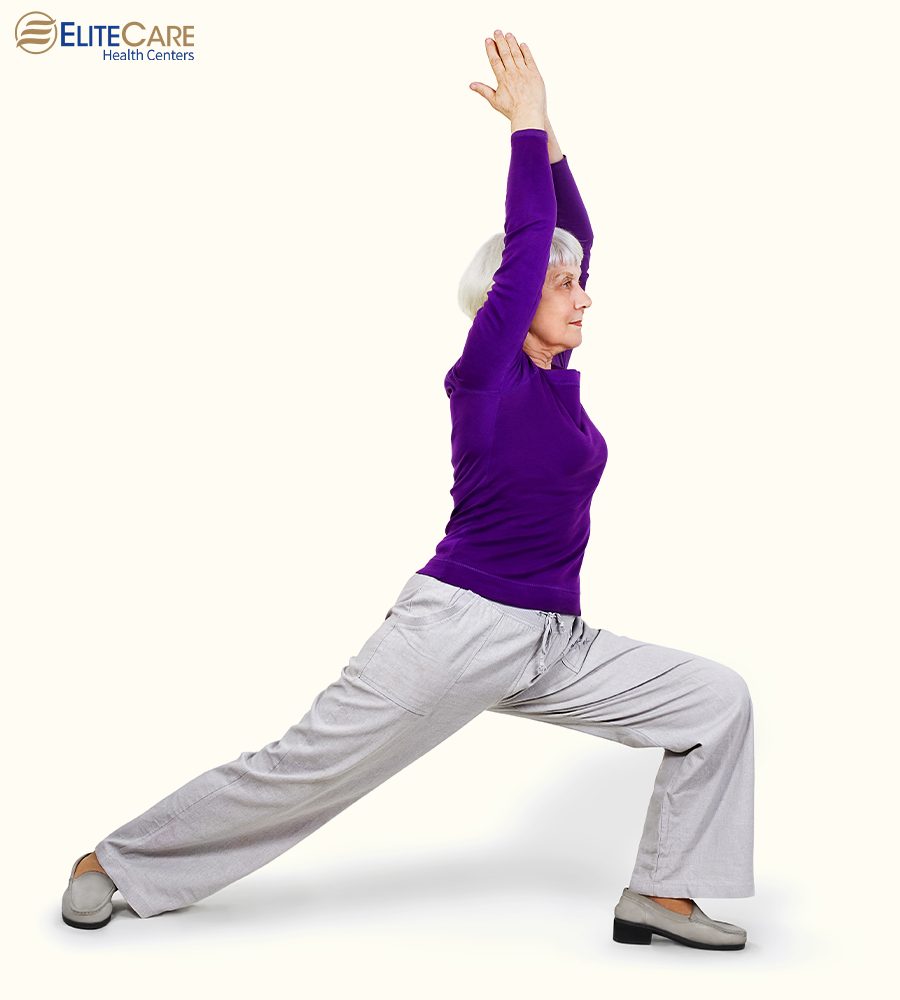
A few steps and repetitions are needed to master the high lunge position.
- Have the seniors put their right foot forward to start. If necessary, be by their side to assist with their balance.
- They can go into a lunge position by bending their right knee.
- Give the senior as much time as necessary to achieve the desired knee bend, which is a 90-degree angle.
- Make sure their pelvic area stays tucked in as the knee is bent. This will safeguard the lower back while ensuring the spine stays erect.
- Raise arms into the air with their palms touching each other if possible. By doing this, the senior may strengthen their posture while stretching the front body.
- Repeat the process with the other side.
A High Lunge Pose strengthens the leg, gluteal, arm, and core muscles while enhancing balance and stability.
Cautious with a new exercise routine
Seniors can benefit greatly from exercise routines for balance enhancement but should proceed with caution. Use a chair or a wall for additional support to prevent falls. Start with the simpler exercises and progress to the more difficult ones gradually.
Go at an easy pace and listen to your body. Before performing these workouts, make sure to hydrate and eat well. Have a carbohydrate-rich snack before a workout. Such as a slice of toast or a granola bar.
Before beginning a new workout program, discuss any balance issues with a doctor.
Summing up
There are numerous techniques to strengthen one’s core and enhance the ability to maintain one’s balance with the aid of these exercises. Consider doing at least 10 minutes of exercise each day. Including these simple workouts in the senior’s routine will significantly improve their balance and lower the chance of falling.
- Tags:balance excercises for seniorsbalance exercisesexcercises to improve balancehealth and wellness centerhealth and wellness serviceshealth care centerknee pain treatmentmedical cliniconline doctor consultationpreventive careprimary careprimary care physicianprimary care servicesprimary servicessenior care serviceswellness care centers
Frequently Asked Questions
Tai Chi is often considered one of the best exercises for improving balance in the elderly. Its slow, controlled movements help enhance stability, strength, and flexibility, reducing the risk of falls. Regular practice of Tai Chi has shown significant benefits in promoting better balance and overall well-being among seniors.
To improve balance as you age, consider exercises like Tai Chi, yoga, or simple balance drills. Strengthening leg muscles through squats, calf raises, and single-leg stands can also enhance stability. Regular practice, along with maintaining overall fitness and flexibility, contributes to better balance in older age.
Poor balance in seniors can result from age-related changes such as decreased muscle strength, joint stiffness, and changes in vision or inner ear function. Neurological conditions, medications, and issues with the vestibular system can also contribute to balance problems in older adults. Regular exercise and medical evaluations can help manage and improve balance concerns.
Vitamin D plays a crucial role in maintaining balance as it supports muscle function and strength, essential for stability. Adequate levels of Vitamin D have been linked to improved balance and reduced risk of falls, particularly in older adults. However, it’s essential to consult a healthcare professional for personalized recommendations regarding supplementation.
